
Climate change is a complex problem that requires creative solutions. Different applications require different strategies. Many think that electrification is the best path towards clean energy and that may be true for large companies with deep pockets. However, homeowners are not as prepared for the cost of conversion. This is particularly true for New Jersey residents who are highly reliant on oil, gas, and propane for household needs. Read on to learn more about the hidden costs of electrification.
The Hidden Costs Of Electrification – Things You Need To Know!
Table of Contents
- 1 The Hidden Costs Of Electrification – Things You Need To Know!
- 1.1 Replacing Traditional Heating Systems with Electrical Heat Pumps
- 1.2 Replacing Fuel-Based Water Heaters With Electric Water Heaters
- 1.3 Converting from a Gas Cooking Range to an Electric Stove
- 1.4 Setting Up an Electric Car Charging Station
- 1.5 Replacing Gas Dryers with Electric Dryers
- 1.6 Upgrading Electrical Service from 100A to 200A
- 2 Obstacles and Consequences of the Energy Master Plan
- 3 Take Action Now
In this article, we discuss some of the upfront costs that come with the conversion to electricity.
Replacing Traditional Heating Systems with Electrical Heat Pumps
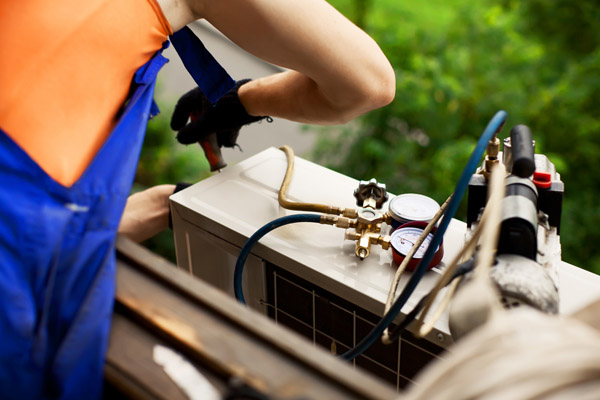
Heat pumps are known for their high energy efficiency and year-round utility. These features make it tempting for homeowners to switch. However, heat pumps suffer from a decline in performance as the temperature plunges. This is a concern for New Jersey residents since the state often experiences low temperatures in winter.1 This means that homes require a heating system that can function effectively, even when the temperatures plummet.
Some heat pumps also require HVAC ductwork. If a home doesn’t have this yet, then homeowners will have to consider the high cost of installation and the length of project completion. New Jersey has many older homes that were built without the use of ductwork in mind. This means that the walls and ceilings will need a major overhaul. Homeowners may have to set aside $6,800 to $12,400 for ductwork in retrofitting.2
Lastly, the electrical system in older homes may not be able to handle the power requirements of a heat pump. An upgrade is necessary to increase capacity. This can easily cost $4,000 to $7,000 for most homes.3
The astronomical expenses make it difficult to justify the replacement.
Replacing Fuel-Based Water Heaters With Electric Water Heaters
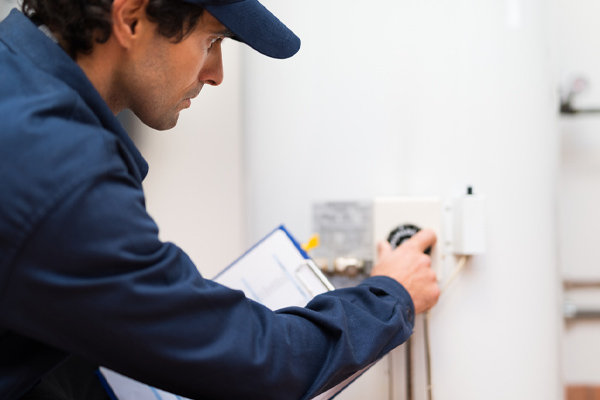
Water heaters are crucial in regions with cold winters. These appliances make it easier to clean, cook, and bathe. The fuel for home heating systems is often used for water heaters as well. Most families depend on heating oil, gas, or propane because of their low cost.
Those who intend to go all-electric will need to install an electric water heater. This is not a trivial matter with some shelling out as much as $4,000 for materials and labor.4 Large homes may need multiple units which further increases the costs.
The removal of the existing water heater may prove to be expensive if it is located in an area that is difficult to access. Contractors may quote as much as $500. Homeowners may also pay more for extended warranty coverage for the new unit. Permits, carpentry, electrical work, and expansion tanks can also bump up the expenditure by about $3,000. Furthermore, cosmetic repairs, such as drywall repairs or retiling your shower may be necessary.
Converting from a Gas Cooking Range to an Electric Stove
Electric stoves use 240V while gas stoves use 120V. Therefore, homeowners will need to get an electrician to make the necessary changes. They will have to install a compatible receptacle near the stove and run new wires from the circuit breaker. This can cost roughly $400 or more depending on the current kitchen configuration.5
Although electric stoves offer precise temperature control and ease of cleaning, gas stoves can last longer and heat food faster. Those who live in areas that frequently experience power outages should think twice about conversion. If they push through with it, then they must prepare alternative cooking solutions for emergencies.
Setting Up an Electric Car Charging Station
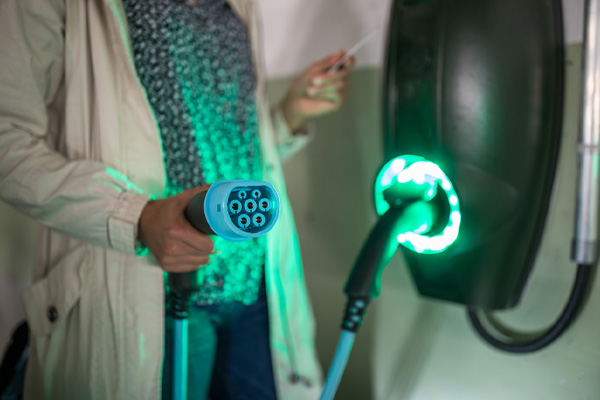
Electrification for personal transport does not stop upon the purchase of an electric vehicle. The EV needs regular charging in order to run. This can be done from the home by setting up an electric car charging station. The cost of installation will depend on the unit type and setup complexity with the national average at around $750.
Basic chargers or Level 1 are cheap but slow. Most can plug in directly to a standard 120V socket. Advanced charging stations or Level 2 can charge faster than basic units but they are more expensive to acquire and install. High-end installations can cost just under $2,000.6 Of course, we also have to factor in the cost of the electricity consumed while charging the vehicle every night. This will largely depend on the miles traveled.
Replacing Gas Dryers with Electric Dryers
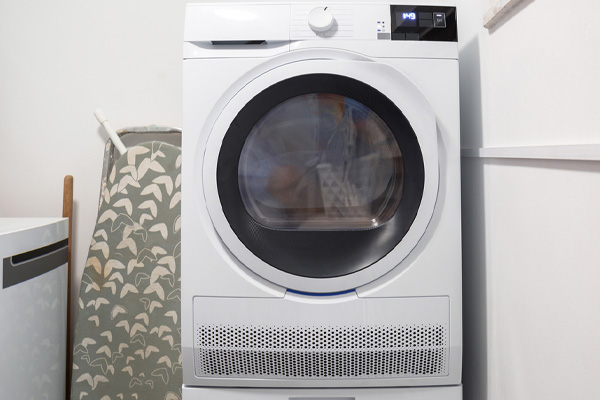
Both gas dryers and electric dryers generate heat to remove moisture from clothes. They make it possible to reuse articles of clothing faster than simply air-drying them. Some prefer gas dryers because they operate at half the cost of electric models.7 According to Bob Villa, on average, the former only consumes 15-25 cents per load while the latter costs 30-40 cents per load. Choosing gas power results in long-term savings.8
However, others might insist on converting to an electric dryer, in which case they would have to purchase a brand new unit. They will also need to supply a 240V socket which means hiring a licensed electrician to install one in the laundry room. Charges can range from $250 to $1,000. Smaller electric dryers may be able to run on standard lower voltage wall sockets but the limited capacity might prove to be frustrating.
A Note about Disconnecting Gas
If you are switching to an all-electric dryer, then you will also need to disconnect the gas supply. You will need to hire a contractor to do this. They will need to locate the shutoff valve right where the gas pipe goes through the wall. They will need to turn off the valve to stop the flow and disconnect the tubing. Then, they will need to protect the valve from dirt.
Those that don’t have a compatible outlet will need to take on this problem first with the help of an electrician. This job can be fast and easy with accessible wiring such that $350 is sufficient to get the job done. However, it might be slow and difficult with drywall getting in the way. It can cost more than $1,000 to perform the installation and repair subsequent damage.9 Some homes may also need additional capacity for the breaker panel which is another added cost. You will need to get a quote from an electrician before embarking on a project like this.
Upgrading Electrical Service from 100A to 200A
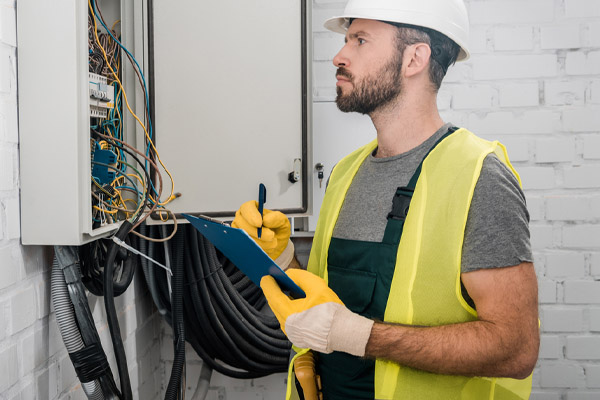
It is common for old homes in New Jersey to have an electric service rated at 100 amperes. While this might be sufficient for traditional appliances, the increasing dependence on electricity is likely to require an upgrade to 200 amperes. This will allow multiple appliances to run in parallel without any problems.
The cost of the box and the installation range from $750 to $2,000. This can go even higher if the job entails new wiring, circuit breaker, and permit. Those with experience in electrical work can use their skills to do it themselves and stay on the lower end of the price spectrum. It is also possible to look for electricians with a low hourly rate. If a major overhaul of the electrical wiring is needed, then the total cost can easily run up to $4,500.10
Obstacles and Consequences of the Energy Master Plan
Environmental awareness is at an all-time high. The majority of people are eager to help in the push towards clean energy. New Jersey is with the rest of the country in trying to reduce climate change. The state’s Energy Master Plan aims for 100% clean energy by the year 2050. While the residential energy industry supports this goal, the obstacles and consequences of the plan are hard to ignore. Families deserve to know what lies ahead if the EMP is implemented. They have the right to see the whole picture including the financial impact for each household.
Take Action Now:
Let your voice be heard. Send a message to your local senator. Click the button below to take action today!
1. Significant and Unnecessary Upfront Costs
Moving from gas to electric power for heating and cooling is an expensive proposition. People will need to look beyond the price of the units and check the hidden costs. Adding these all up can result in sobering figures. NJ contractors estimate the total cost of conversion to heat pumps at over $20,000 for a whole house. The electrification of clothes dryers, water heaters, cooking stoves, and other gas-dependent appliances will take this even higher. This upfront cost may prove too much for most households. Even those who can afford this bill may wonder whether there are cheaper and better ways available.
If you do choose to follow through with the installation of an electric heat pump, click the button below to learn about our heat pump installations.
2. Unmanageable and Ongoing Expenses
The widespread use of gas or oil-powered appliances makes financial sense. Gas and oil is cheaper than electricity in the state at current consumption rates. If households begin to shift more towards electricity, then demand will push power costs even higher. This can be particularly challenging in the winter with everyone having to run their heat pumps all day. It might be better to offer multiple low-carbon options instead of focusing solely on electrification. This can help control prices and make clean energy viable for homeowners.
3. Unnecessary Strain on Current Electric Grid
Although heat pumps are known for their efficiency, they still consume a lot of power. Making these the only source of heat during winter will put unnecessary strain on the power grid.11 Massive upgrades on the infrastructure is needed to make it ready for the task. This will require enormous investments and a great deal of work. Even when the upgrades have been completed, families may not be satisfied with the warmth provided by heat pumps during the coldest days of the year. The performance drop makes it vital for other heating options to be available.
It is important to remember the brownout situation that occurred in Texas in Feb 2021. This example shows how increased demands for power can cause disastrous rolling blackouts. This is especially true in the winter, a time that comes with increased power demands for indoor heating. In Texas, there were actually 111 people who died during the 2021 winter storm.12
4. Missed Opportunities
According to SmartHeatNJ.com, the US Energy Information Administration claims that only 13% of households across the country use electricity for heating.13 Natural gas is much more popular at 75% while other petroleum products make up 10%. Clearly, New Jersey’s plan for full electrification by 2050 will require a lot of work. It might not even be necessary since there are emerging cheaper low-carbon and zero-carbon alternatives. Examples include renewable natural gas and Bioheat fuel. These products can lower emissions without costly equipment conversions.
Conclusion
The path to a more sustainable future requires careful navigation. Solutions that may seem obvious at first glance might prove to be problematic upon closer inspection. New Jersey’s Energy Master Plan calls for an expensive switch to electric heat pumps. Low-income families may not be able to afford this without financial assistance. The cost of power consumption can also overwhelm those who are already struggling to make ends meet. It may be time to explore other ways to move forward and give people more viable options for clean energy.
Take Action Now
Let your voice be heard. Send a message to your local senator. Click the button below to take action today!
Resources:
1. Weather in New Jersey: Climate, Seasons, and Average Monthly Temperature ↩
2. Comparative Energy Use of Residential Gas Furnaces and Electric Heat Pumps ↩
3. Op-Ed: The big and costly flaw in Gov. Murphy’s Energy Master Plan ↩
4. How Much Does Water Heater Replacement Cost? ↩
5. Should I Convert My Electric Stove to a Gas? ↩
6. How Much Does An Electric Car Charging Station Installation Cost? ↩
7. Can A Gas Dryer Be Converted To Electric? ↩
8. Choosing a New Appliance: Gas vs. Electric Dryers ↩
9. I Want to Replace Gas Clothes Dryer with an All-electric One. Who do I Contact about Disconnecting Gas? ↩
10. How Much Does it Cost to Upgrade to a 200 AMP Service? ↩
11. Why does the electricity grid have to stay in balance? ↩
12. Texas Tribune: At Least 111 People Died In Texas During Winter Storm, Most From Hypothermia ↩
13. Inside the Energy Master Plan ↩

